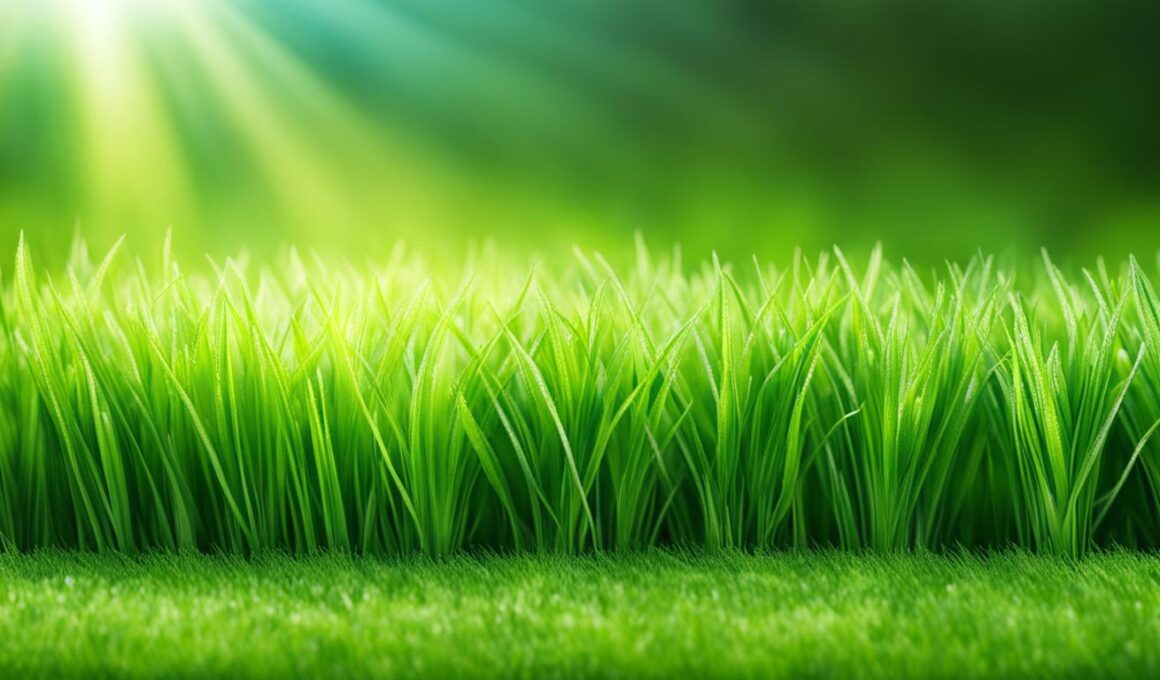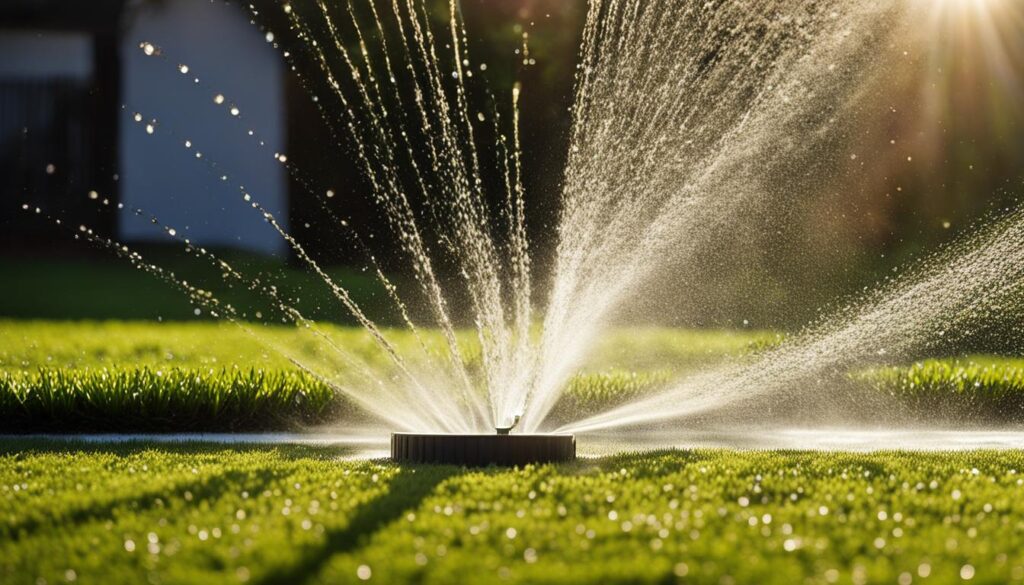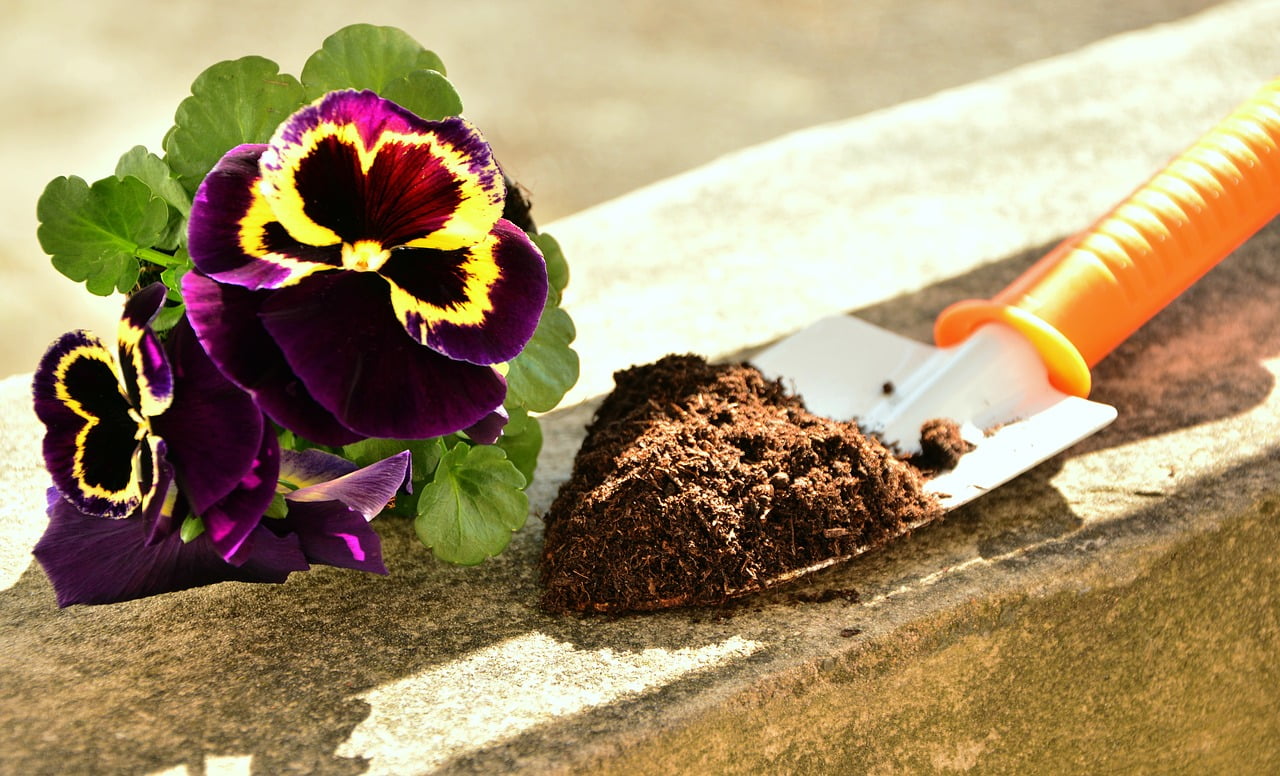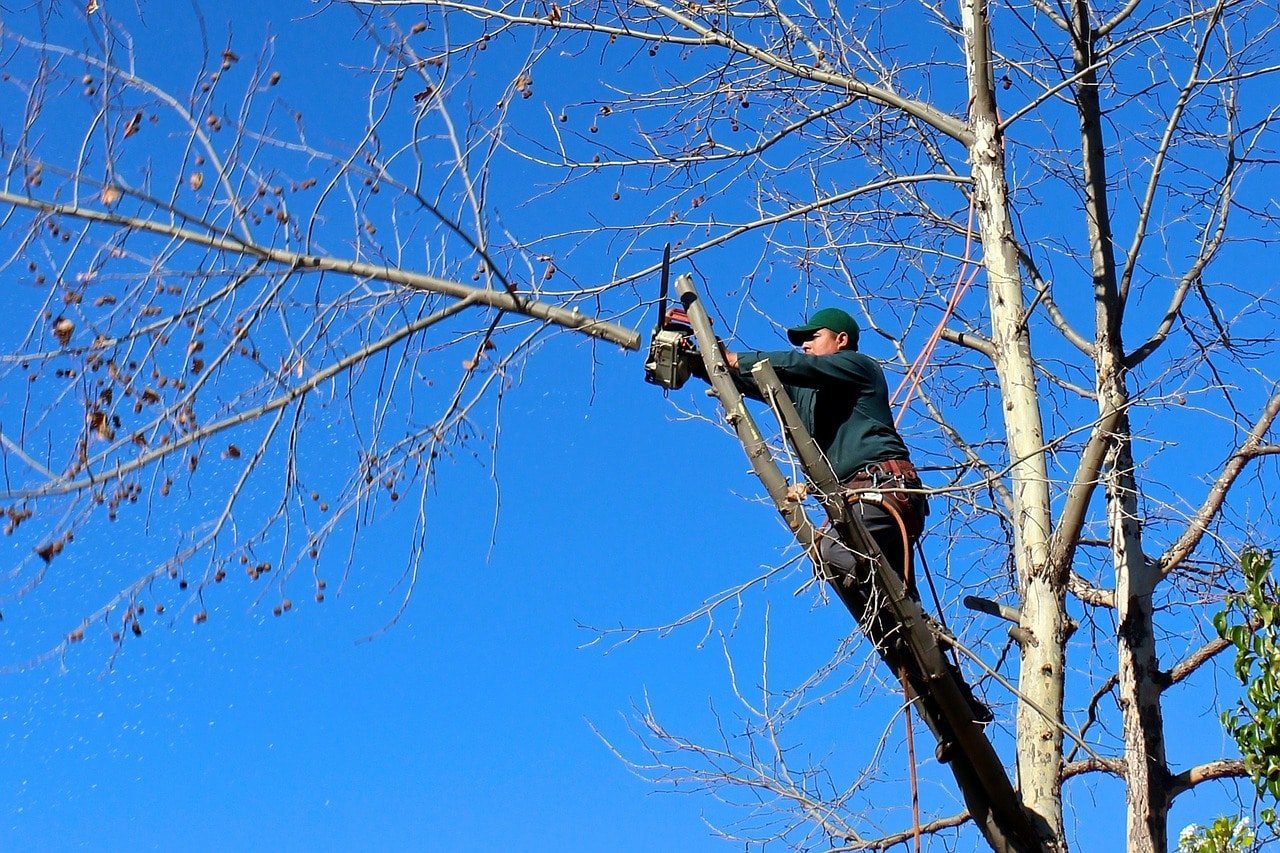Artificial grass has become a popular choice for homeowners looking to maintain a beautiful lawn with minimal effort. Whether you have Bella Turf’s premium quality synthetic turf or another brand, proper cleaning is crucial for both the appearance and longevity of your artificial grass. Cleaning methods can vary based on factors like children, pets, and the environment surrounding your turf.
In this guide, we will provide you with step-by-step instructions on how to clean your artificial grass effectively. By following these tips, you can maintain an immaculate artificial lawn that will impress your guests and enhance your outdoor space.
Key Takeaways:
- Regular cleaning is crucial for the maintenance of your artificial lawn.
- To clean turf effectively, remove surface dirt, apply a suitable cleaner, and rinse thoroughly.
- Prevent damage to your artificial grass by avoiding open flames and using appropriate cleaners.
- For pet owners, it is important to properly clean pet waste to maintain a clean and odor-free lawn.
- Following these cleaning tips will help keep your artificial grass looking fresh and vibrant for years to come.
The Importance of Cleaning Artificial Grass
Artificial grass is a low-maintenance alternative to natural grass. However, regular cleaning is still necessary to maintain its appearance and longevity. Failure to clean your synthetic grass can result in the accumulation of dust and debris, which can make the grass look dull and unkempt.
Cleaning artificial grass is particularly important if you have children or pets, as they can introduce additional dirt and mess to the area. Environmental conditions, such as windy weather or nearby construction, can also contribute to the buildup of debris on your artificial lawn.
By regularly cleaning your artificial grass, you can keep it looking fresh and vibrant. Routine maintenance not only removes surface dirt but also helps prevent the growth of weeds and the development of stains or odors.
To effectively clean your artificial grass, follow our step-by-step guide in the next section. By incorporating these cleaning practices into your routine, you can ensure the longevity and beauty of your synthetic turf.
Image Alt Tag: cleaning artificial grass – maintaining synthetic grass
Step-by-Step Guide: How to Clean Artificial Grass
To maintain the beauty and cleanliness of your artificial grass, it’s important to follow a proper cleaning routine. By regularly removing surface dirt and debris, pouring a suitable cleaner, and ensuring thorough watering, you can keep your artificial grass looking fresh and vibrant for years to come.
- Remove surface dirt and dust: Begin by using a leaf blower or broom to sweep away any loose dirt and debris from the surface of the artificial grass. This step will help prepare the turf for a deeper clean.
- Pour the cleaner: Mix a suitable cleaner with water, following the manufacturer’s instructions. Pour the cleaning solution into a spray bottle or attach a hose with a reservoir, making it easier to apply the cleaner evenly across the turf.
- Wet the turf thoroughly: Start by spraying the entire surface of the artificial grass with water. This initial rinse will help remove any loose debris and prepare the turf for the cleaning solution.
- Apply the cleaning solution: Using the spray bottle or hose, apply the cleaning solution evenly across the artificial grass. Pay extra attention to areas that are prone to heavy foot traffic or have visible stains.
- Loosen dirt particles: After applying the cleaner, use a mechanical power broom or brush to gently loosen any remaining dirt particles. This step will help ensure a thorough clean and remove any stubborn debris.
- Rinse again: Once you have loosened the dirt particles, rinse the turf again with water. This step is crucial to remove any remaining cleaner and debris from the artificial grass.
- Allow the grass to air dry: After rinsing, allow the artificial grass to air dry naturally. Avoid walking on the grass until it is completely dry, as this can cause damage to the fibers.
- Perform regular maintenance: To keep your artificial grass looking its best, make sure to perform regular maintenance tasks such as removing leaves and debris, brushing the fibers to keep them upright, and addressing any stains or spills promptly.
By following these simple steps, you can effectively clean your artificial grass and maintain its appearance and longevity. Regular cleaning and maintenance are essential for ensuring a clean, beautiful lawn that you can enjoy year-round.
Tips for Removing Stains from Artificial Grass
Taking care of stains on your artificial grass is essential for maintaining its pristine appearance. Whether it’s a general stain, a stubborn mark, or pet waste, a few simple steps can help you eliminate the blemish and keep your artificial lawn looking fresh.
Cleaning General Stains
When it comes to general stains on your artificial grass, start by using a mild detergent or a bio-friendly cleaner. Dilute the cleaner with water according to the product instructions and apply it to the stained area. Use a soft-bristled brush to gently scrub the stain, working in circular motions. Rinse the area thoroughly with water to remove any residue. This method should effectively remove most common stains from your artificial grass.
Dealing with Stubborn Stains
If you’re facing a stubborn stain that is resistant to regular cleaning methods, you may need to step up your approach. For tough stains, try using an ammonia-based cleaner or mineral spirits. Apply the cleaner directly to the stain and let it sit for a few minutes to penetrate the mark. Then, use a brush or cloth to gently scrub the stain, being careful not to damage the grass fibers. Rinse the area thoroughly with water to remove any traces of the cleaner. This method should help you tackle even the most persistent stains and restore the appearance of your artificial grass.
Cleaning Pet Waste
Cleaning up after your furry friends is an important part of maintaining a clean and odor-free artificial lawn. Begin by removing any solid waste from the surface using a plastic bag or scooper. Once the solid waste is removed, rinse the area with water to dilute and remove any remaining residue. To further eliminate any stains or odors, apply a suitable cleaner specifically designed for pet stains. Gently brush the area to lift any remaining marks and rinse it thoroughly with water. If needed, use an odor neutralizer to ensure your artificial grass remains fresh and smelling great.
By following these tips and techniques, you can effectively remove stains from your artificial grass and maintain its pristine appearance. Regular cleaning and proper stain removal will ensure your artificial lawn looks beautiful and lasts for years to come.
Preventing Damage to Artificial Grass
To ensure the longevity and pristine appearance of your artificial grass, it’s essential to prevent damage caused by various factors. By following these simple guidelines, you can maintain the integrity of your synthetic turf and enjoy its beauty for years to come.
Avoid using open flames, fireworks, or cigarettes near the artificial grass as they can damage the blades. Synthetic grass is made from durable materials, but exposure to extreme heat or burning substances can cause irreparable harm. Keep any potential fire hazards away from your artificial lawn to prevent accidental damage.
Clean the grass regularly to prevent dust, dirt, and debris accumulation. Dust, leaves, and other debris can accumulate on the surface of your artificial grass over time, dulling its vibrant appearance. To prevent this, make it a habit to regularly clean your turf using a leaf blower or a gentle broom. Removing surface debris will help maintain its fresh and clean look.
Use weed killers safe for synthetic turf to prevent weed growth. Weeds can degrade the overall aesthetic of your artificial grass and create an uneven surface. To prevent weed growth, choose weed killers specifically formulated for use on synthetic turf. This will help keep your lawn weed-free and looking its best.
Avoid using salt to melt snow or ice on the grass as it can damage the backing and affect drainage. While it may be tempting to use salt to melt away snow or ice on your artificial grass, it can cause damage to the backing material and interfere with proper drainage. Instead, opt for alternative methods such as sweeping away snow or using a non-salt ice melting product to keep your grass in optimal condition.
By following these preventive measures and maintaining a regular cleaning routine, you can ensure that your artificial grass remains in pristine condition. Take the necessary steps to protect and care for your synthetic turf, and it will continue to provide you with a beautiful, low-maintenance landscape for years to come.
How to Clean Pet Waste Off Artificial Grass
When it comes to keeping your artificial grass clean and odor-free, taking care of pet waste is crucial. Follow these steps to effectively clean and remove both solid and liquid pet waste from your artificial grass.
Cleaning Solid Waste
To remove solid waste, start by using a plastic bag or a scooper to pick up the waste from the surface of the grass. Make sure to wear gloves for hygiene purposes. Once the waste is removed, dispose of it properly in a waste bag or designated area.
After removing the solid waste, rinse the affected area with water to dilute any remaining residue. Next, spray a suitable cleaner onto the area and let it sit for a few minutes to break down any remaining bacteria or odors.
Using a stiff-bristled brush, gently scrub the area to remove any stains or remaining residue. Be careful when brushing to avoid damaging the artificial grass fibers. Finally, rinse the area thoroughly with water to ensure all cleaner and waste have been completely removed.
Cleaning Liquid Waste
For liquid pet waste, start by immediately rinsing the affected area with water. This will help dilute the waste and prevent odor buildup. Use a hose or bucket to thoroughly rinse the area.
Once the area is rinsed, create a solution of vinegar and water. Mix equal parts of vinegar and water in a spray bottle. Spray the solution onto the affected area, making sure to cover the entire spot.
Using a gentle scrub brush, lightly scrub the area to help neutralize any odors and break down any remaining residue. Be cautious not to scrub too hard, as it may damage the artificial grass. After scrubbing, rinse the area thoroughly with water to remove any vinegar residue.
Conclusion
Regular cleaning and maintenance are crucial for maintaining the longevity and aesthetics of your artificial grass. By following the easy step-by-step guide provided, you can effectively clean your turf and keep it looking fresh and clean.
Remember to prevent damage by avoiding open flames, fireworks, or cigarettes near your artificial lawn. Instead, use suitable cleaners and detergents specifically designed for synthetic grass to maintain its quality and appearance.
Additionally, cleaning pet waste is essential for keeping your artificial lawn clean and odor-free. Be sure to remove solid waste promptly, rinse the area with water, and use a suitable cleaner to thoroughly clean and sanitize the affected spot.
By implementing these maintenance practices and following this easy guide, you can ensure that your artificial lawn remains lush and green for years to come. Enjoy the benefits of a low-maintenance, beautiful-looking turf without the hassle of traditional grass upkeep.
Is Turf Cleaning Methods Applicable to Spray Painted Grass as Well?
Yes, turf cleaning methods can be applicable to spray painted grass as well. To revitalize your lawn now, consider using a mild detergent and water to gently scrub away the spray paint. You can also use a pressure washer to remove the paint and restore the natural look of your grass.
FAQ
How often should I clean my artificial grass?
It is recommended to clean your artificial grass regularly to maintain its appearance and longevity. The frequency of cleaning depends on factors such as children, pets, and environmental conditions. Assess the cleanliness of your turf and clean as needed.
What cleaning solutions should I use for my artificial grass?
For general stains, a mild detergent or bio-friendly cleaner can be used. Stubborn stains may require ammonia-based cleaners or mineral spirits. It is important to use cleaners suitable for synthetic turf and follow the manufacturer’s guidelines.
How can I remove pet waste from my artificial grass?
To clean solid waste, use a plastic bag or scooper to remove it from the surface. Rinse the area with water and apply a suitable cleaner. Use a stiff-bristled brush to gently scrub the area and rinse it again. For liquid waste, rinse the area with water and use a solution of vinegar and water to neutralize odors. Scrub the area gently and rinse it thoroughly.
Can I use salt to melt snow or ice on my artificial grass?
No, it is not recommended to use salt on artificial grass as it can damage the backing and affect drainage. Instead, use appropriate snow and ice removal methods that are safe for synthetic turf.
How do I prevent damage to my artificial grass?
To prevent damage, avoid using open flames, fireworks, or cigarettes near the artificial grass, as they can damage the blades. Regularly clean the grass to prevent dust, dirt, and debris accumulation. Use weed killers that are safe for synthetic turf to prevent weed growth.
What is the best way to clean my artificial grass?
Start by removing surface dirt and dust using a leaf blower or broom. Prepare a cleaning solution by mixing a suitable cleaner with water and apply it using a spray bottle or hose. Rinse the turf thoroughly with water and use a mechanical power broom or brush to loosen dirt particles. Rinse again to remove any remaining cleaner and allow the grass to air dry. Perform regular maintenance to keep the artificial grass looking fresh and clean.
Why is cleaning artificial grass important?
Cleaning artificial grass is important to maintain its appearance, prevent the accumulation of dust and debris, and prolong its longevity. Regular cleaning helps keep the grass looking fresh and presentable.











